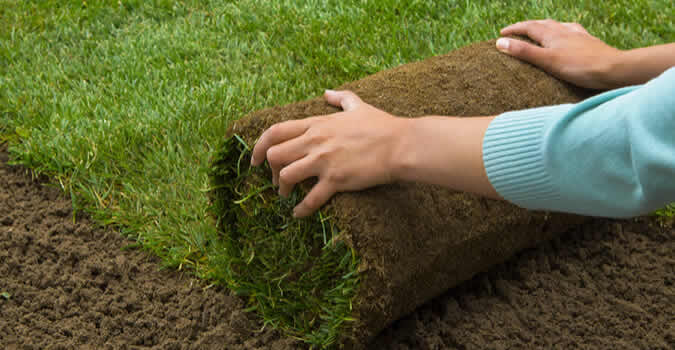Your new home is gorgeous. It’s everything you hoped it would be. Your kids love the new schools and you enjoy your morning commute.
However, there is one problem: The yard. You want a green, lush lawn that neighbors will love. Instead, your lawn is covered in dirt, rocks and weeds. Sod is the best way to improve your property.
Sod is fast growing so you can expect a dense and healthy lawn in a matter of weeks. Sod is resistant to diseases and pests which will increase your yard’s longevity. To get your property ready to go for new sod, you only need to do three things: prepare the soil, select the sod and then lay the turf. We’ve provided easy steps to help you create the perfect backyard for your home.
Step 1: Prepare the soil
It is relatively easy to maintain a beautiful lawn once it has been laid. However, you will need to prepare the soil well before you start laying the turf. This ensures your sod grows well.
Remove rocks, weeds and patches of unwanted Grass
Your new sod will need to be laid on top of a healthy, smooth soil. Ask a landscaper to remove any rocks from your property. Make sure the soil is free of debris. To cut weed-ridden, patchy or unkempt grass below the roots, you may need to rent a lawn mower.
Rototill Your Yard
Sod thrives in well-aerated, oxidized soil. Rototilling your yard will loosen the soil and give it the oxygen it needs. To give your new sod enough space, level the soil about an inch below your sidewalks and driveway.
Test your Soil
Turf thrives on nutrient-rich, slightly acidic soil. To ensure that your soil is suitable for turf, send a sample of soil to a laboratory. Ask your provider to inspect your soil. The turf can be modified or enhanced to suit your soil’s characteristics if the soil isn’t strong enough to support the sod.
Step 2: Select the Sod
Roger Cook, a landscaper, says that when you purchase sod, you are essentially buying time and sod from other landscapers.
The sod provider can help you choose the right turf for your lawn. You don’t even need to wait one year to see what it will look like.
Notify Your Turf Provider Of Special Needs
Is your lawn in full shade or partial shade? Are you near a beach? Do your soils contain sand? Does your yard contain certain landscaping features? These are questions to ask your turf specialist. Based on the features of your yard, a specialist will recommend certain types of sod. Make sure to inform your provider about any factors that might affect your sod’s growth.
Take Your Time
It doesn’t usually require much more than periodic watering when the sod is laid for the first time. However, as different types of sod grow, they require more care. You should consider your lawn’s time and your interest in lawn maintenance before you choose a type of sod that suits your needs.
Talk to Your Turf Provider
Mixed-breed grasses are often offered by sod specialists. Hybrids are made from two or more types of grass to achieve optimal color, texture and health. Ask your provider what sod he/she recommends and prefers.
Step 3: Lay the Turf
Your turf will be cut and laid by a professional within 24 hours. To ensure that your lawn has enough surface area, order 5% more so you have extra sod to cover corners, curves and other awkward spots.
Search for a Straight Surface
Begin laying your sod next to a straight, long edge in your yard, like a driveway or adjacent sidewalk or the side or back of your house. This is the edge where you will roll your first roll. After laying it, you should remove any air pockets.
Lay the Rest
Next, make sure to align the remainder of your sod with the first straight one. To cut holes for sprinkler heads or to adjust the shape of sod around landscaping features, decks, and other elements in your yard, use a knife. To avoid any gaps, lay the rolls side-by-side.
Care for the Newly-Laid Sod
For the first week, you should not be on your lawn. You must water it every day. Water helps to settle the soil and keep the sod’s roots healthy. Bring down your watering frequency after this time.
Your lawn should receive approximately one inch of water each week after the first month. The lawn should be mowed when it is 3 inches high. After that, fertilize it once per month for at least three more months.
You’ll have a beautiful, lush lawn for your family and neighbors if you carefully prepare the soil, choose the right sod, lay it correctly, and then enjoy your garden. For more information on how to care for your lawn, contact your turf specialist.





